 One of the reasons I found myself being wooed over to the Windows Mobile dark side last year was after Palm unforgivably failed to deliver on their promise of Wi-Fi drivers for the Treo 650.
One of the reasons I found myself being wooed over to the Windows Mobile dark side last year was after Palm unforgivably failed to deliver on their promise of Wi-Fi drivers for the Treo 650.
Despite being at the UK launch – and distinctly remembering the words, “Wi-Fi drivers will be made available on our website” coming directly from the mouth of one of their fibbing representatives – after a long six months of waiting with no explanation, I reluctantly jumped ship.
With Windows Mobile, Wi-Fi is either built in or a mere Wi-Fi enabled SD card away, so lured by the promise of wireless connectivity, I invested in an i-mate JAM Windows smartphone and a Sandisk Wi-Fi 256MB SD card.
Although I was now fully Wi-Fi’d up, in reality I rarely used the phone for wireless browsing as the display was too small to be practical for a lot of web surfing, and I invariably ended up switching to text-only browsing for most sites (after all, it’s generally information I want when I’m out and about, not pretty pictures).
 Although the lack of Wi-Fi remains a major disappointment on the Treo (it’s also noticeably absent from the latest Treo 700p, much to the consternation of their loyal user base), T-Mobile’s superb unlimited data Web’n’Walk deal more than makes up for it, offering unlimited GPRS data for just £7 a month.
Although the lack of Wi-Fi remains a major disappointment on the Treo (it’s also noticeably absent from the latest Treo 700p, much to the consternation of their loyal user base), T-Mobile’s superb unlimited data Web’n’Walk deal more than makes up for it, offering unlimited GPRS data for just £7 a month.
Wi-Fi versus GPRS
Although I love the speed of Wi-Fi on the move, it’s not a great deal of use when you’re out in the wilds and miles from a hotspot.
If you do manage to locate a connection, more often than not someone will be demanding a connection fee – and is there really that much benefit to be had from broadband speeds when you’re looking at a squinty little phone screen?
The Treo does come with the faster EDGE technology, which offers an impressively nippy maximum data transfer rate of 384 kbp, but it’s a bit of a non starter for UK users as the last time we looked only Orange were offering the service.
 Although onboard Wi-Fi appears to remains a distant dream for the Treo there is at least the option to use the Enfora Wi-Fi sled (review coming shortly).
Although onboard Wi-Fi appears to remains a distant dream for the Treo there is at least the option to use the Enfora Wi-Fi sled (review coming shortly).
It’s not the most elegant solution by any means, but good enough if you’re desperate for Wi-Fi, and the standalone form factor at least means your batteries won’t drain as quickly as phones with built in Wi-Fi.
Skypeless in Seattle, Settle and, err, Splott
Another factor that helped nudge us into the world of Windows Mobile was the lack of Skype support for the Palm.
Despite endless pleas from the sizeable Palm community, Skype haven’t shown the slightest interest in developing a Palm version yet, and continue to remain tight lipped about any possible future plans.
To be honest, we found the Pocket PC version something of a disappointment and only used it very occassionally with very mixed results, but we can see the lack of Skype support continuing to lose some customers for Palm.
 There is, however, a way to access Skype on a Palm via a service called EQC, but it’s a convoluted process which involves running a Java app on your phone and then installing a plug-in on your desktop PC.
There is, however, a way to access Skype on a Palm via a service called EQC, but it’s a convoluted process which involves running a Java app on your phone and then installing a plug-in on your desktop PC.
Although we haven’t tested it yet, Treo owners can try a new alternative VoIP service called mobiVoIP, although this needs “a stable internet connection with good QoS (Quality of Service). Wifi, Bluetooth and EvDO (Rev A) provide that quality” – so, in other words, you can forget all about using it on your standard phone connection.
There is a third option available for ultra keen dabblers who like to tinker about, and this involves using the iSkoot mobile software and a not-inconsiderable amount of fiddling about, as detailed here.
The final frothdown
In my final installment, I’ll explain how the Treo has replaced my laptop for short trips and look to the future of the smartphone.
 The mobile division of TV production company Twofour and Player One Sports are working together to create a weekly short form TV show covering the Australian portion of the Ashes tour for portable devices.
The mobile division of TV production company Twofour and Player One Sports are working together to create a weekly short form TV show covering the Australian portion of the Ashes tour for portable devices. Twofour are clearly planning to flog the maximum amount of ‘media’ to lighten with heavy-wallets of their punters. Alongside the mobisode (and we suspect, cross-promoted during it), there will be a range of associated content including Freddie Flintoff’s Allround Cricket, a Web and mobile fantasy cricket game and a range of other downloadable content such as wallpapers, ring tones and video blog.
Twofour are clearly planning to flog the maximum amount of ‘media’ to lighten with heavy-wallets of their punters. Alongside the mobisode (and we suspect, cross-promoted during it), there will be a range of associated content including Freddie Flintoff’s Allround Cricket, a Web and mobile fantasy cricket game and a range of other downloadable content such as wallpapers, ring tones and video blog. Well they got there finally, Vodafone UK have announced that they’re releasing the less than catchy named Vodafone Mobile Connect USB Modem in the Autumn. It will support their 3G data service and, surprise, surprise, connect to computers using a USB lead. Rather neatly the software disks aren’t needed, as they’re installed directly from the modem.
Well they got there finally, Vodafone UK have announced that they’re releasing the less than catchy named Vodafone Mobile Connect USB Modem in the Autumn. It will support their 3G data service and, surprise, surprise, connect to computers using a USB lead. Rather neatly the software disks aren’t needed, as they’re installed directly from the modem.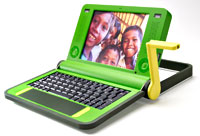 Yesterday, a spokesperson for the One Laptop Per Child (OLPC) programme revealed that Nigeria, Brazil, Argentina, and Thailand have all tendered commitments to purchase one million Linux laptops through the ambitious US-based programme.
Yesterday, a spokesperson for the One Laptop Per Child (OLPC) programme revealed that Nigeria, Brazil, Argentina, and Thailand have all tendered commitments to purchase one million Linux laptops through the ambitious US-based programme.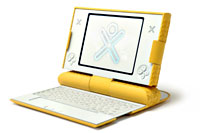 This means that each laptop will be able to talk to its nearest neighbour and create ad hoc, local area networks for sharing data and connections.
This means that each laptop will be able to talk to its nearest neighbour and create ad hoc, local area networks for sharing data and connections.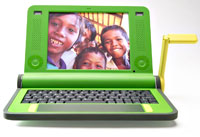 So far, AMD, eBay, Google, Nortel, Red Hat, and a number of other technology companies have all signed up to help support the project
So far, AMD, eBay, Google, Nortel, Red Hat, and a number of other technology companies have all signed up to help support the project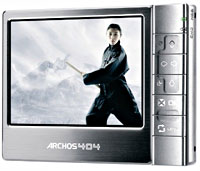 Details are still a little murky on this one, but some information on the upcoming range 404, 504, and 604 PMP devices are bubbling on up on t’internet.
Details are still a little murky on this one, but some information on the upcoming range 404, 504, and 604 PMP devices are bubbling on up on t’internet. Accessories ahoy
Accessories ahoy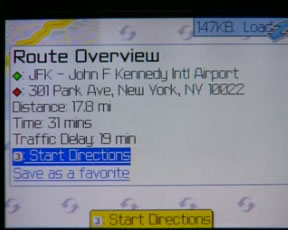 The ever-expanding selection of Google features just grew by one as they announce that they’re providing Live Traffic updates to mobile phones in 30 US cities and partial information in many others.
The ever-expanding selection of Google features just grew by one as they announce that they’re providing Live Traffic updates to mobile phones in 30 US cities and partial information in many others. Google are slightly playing catchup with Yahoo on this one, as they been plotting live traffic on Yahoo Maps since March 2005.
Google are slightly playing catchup with Yahoo on this one, as they been plotting live traffic on Yahoo Maps since March 2005. On the back of the Mobile Maps news, Google also announced that users now have the ability to customize the content that appears on the mobile version of their Personalized Homepage, making it even easier for mobile phone users to quickly get the information they need when away from their computers.
On the back of the Mobile Maps news, Google also announced that users now have the ability to customize the content that appears on the mobile version of their Personalized Homepage, making it even easier for mobile phone users to quickly get the information they need when away from their computers. After an eternity of denials, obfuscation, rumour and counter-rumour, Microsoft have finally confirmed that they will be launching their own rival to Apple’s iPod range.
After an eternity of denials, obfuscation, rumour and counter-rumour, Microsoft have finally confirmed that they will be launching their own rival to Apple’s iPod range. Billboard Magazine, who broke the story, has speculated that the Zune-branded range of products will include music players, video players, WiFi-enabled devices and possibly even a portable video game device, with Microsoft incorporating social networking and mobile media purchasing.
Billboard Magazine, who broke the story, has speculated that the Zune-branded range of products will include music players, video players, WiFi-enabled devices and possibly even a portable video game device, with Microsoft incorporating social networking and mobile media purchasing. Microsoft has already busied itself with the dreadfully punned
Microsoft has already busied itself with the dreadfully punned 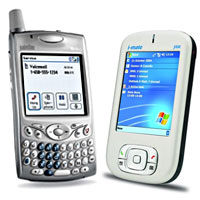 One of the reasons I found myself being wooed over to the Windows Mobile dark side last year was after Palm unforgivably failed to deliver on their promise of Wi-Fi drivers for the Treo 650.
One of the reasons I found myself being wooed over to the Windows Mobile dark side last year was after Palm unforgivably failed to deliver on their promise of Wi-Fi drivers for the Treo 650.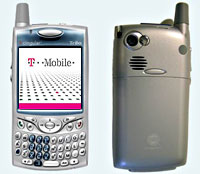 Although the lack of Wi-Fi remains a major disappointment on the Treo (it’s also noticeably absent from the latest Treo 700p, much to the consternation of their loyal user base), T-Mobile’s superb unlimited data Web’n’Walk deal more than makes up for it, offering unlimited GPRS data for just £7 a month.
Although the lack of Wi-Fi remains a major disappointment on the Treo (it’s also noticeably absent from the latest Treo 700p, much to the consternation of their loyal user base), T-Mobile’s superb unlimited data Web’n’Walk deal more than makes up for it, offering unlimited GPRS data for just £7 a month.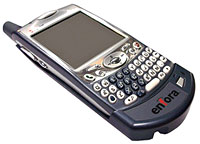 Although onboard Wi-Fi appears to remains a distant dream for the Treo there is at least the option to use the Enfora Wi-Fi sled (review coming shortly).
Although onboard Wi-Fi appears to remains a distant dream for the Treo there is at least the option to use the Enfora Wi-Fi sled (review coming shortly). There is, however, a way to access Skype on a Palm via a service called
There is, however, a way to access Skype on a Palm via a service called 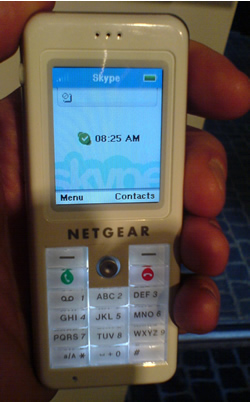 The terrible day that the mobile phone companies had been hoping wasn’t going to arrive, is here. Skype have today announced four WiFi handsets that let you send and receive calls without switching your computer on while wanding around – err, like a mobile phone. They’ve been expected for a while, but are finally getting closer to the hands of the public, being as they’ll start selling in Q3 this year.
The terrible day that the mobile phone companies had been hoping wasn’t going to arrive, is here. Skype have today announced four WiFi handsets that let you send and receive calls without switching your computer on while wanding around – err, like a mobile phone. They’ve been expected for a while, but are finally getting closer to the hands of the public, being as they’ll start selling in Q3 this year.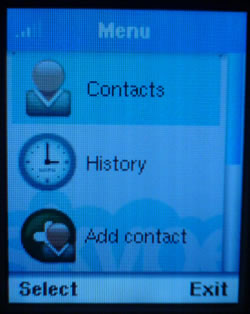 We got our hand on the NetGear SPH101 recently and were really impressed with the solid build and how easy it was to use. The Skype interface was loyal to the computer-based editions, with the graphics being an exact replica.
We got our hand on the NetGear SPH101 recently and were really impressed with the solid build and how easy it was to use. The Skype interface was loyal to the computer-based editions, with the graphics being an exact replica.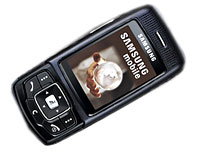 Yeah, we know: it’s another ruddy phone from Samsung who seem to have a new mobile on the market every tea break, but this one is actually a bit different – honest!
Yeah, we know: it’s another ruddy phone from Samsung who seem to have a new mobile on the market every tea break, but this one is actually a bit different – honest!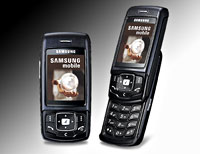 The phone itself looks much like the usual fare from the overactive designers at Samsung, featuring a familiar slide-out design and mean, all-black finish.
The phone itself looks much like the usual fare from the overactive designers at Samsung, featuring a familiar slide-out design and mean, all-black finish.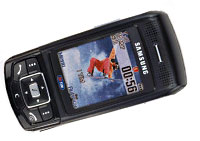 Specifications
Specifications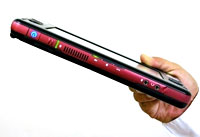 Korean technology company Daewoo Lucoms, have unveiled their new ultra mobile PC Solo M1.
Korean technology company Daewoo Lucoms, have unveiled their new ultra mobile PC Solo M1.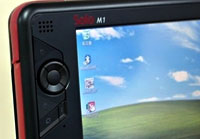 The Solo M1 features a variety of multimedia features, including video and music playback via Windows Media player, a DMB tuner, a 1.3 MP webcam for video conferencing and a 4-in-1 (MMC/ SDIO/ MS/ MS Pro) memory card reader.
The Solo M1 features a variety of multimedia features, including video and music playback via Windows Media player, a DMB tuner, a 1.3 MP webcam for video conferencing and a 4-in-1 (MMC/ SDIO/ MS/ MS Pro) memory card reader.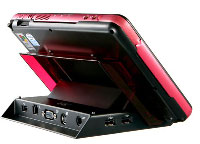 There’s also a range of optional accessories available, including a leather case, mini keyboard and external optical drive.
There’s also a range of optional accessories available, including a leather case, mini keyboard and external optical drive.